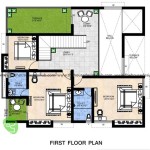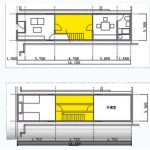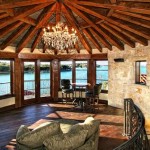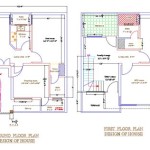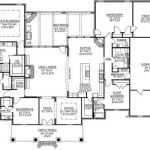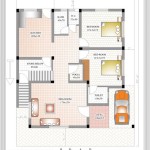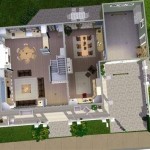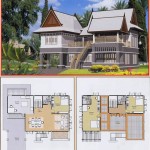Essential Aspects of Flat Roofed House Plans
Flat roof houses, also known as single-slope roofs, are gaining popularity due to their sleek, modern aesthetics, energy efficiency, and cost-effectiveness. When designing a flat roofed house, it's crucial to consider several essential aspects to ensure its functionality and longevity.
Roofing Membrane
The roofing membrane is the primary layer that protects the roof from water penetration. It can be made of various materials such as asphalt, TPO (thermoplastic polyolefin), EPDM (ethylene propylene diene monomer), or PVC (polyvinyl chloride). Choosing a durable and weather-resistant membrane that can withstand local climate conditions is vital.
Slope and Drainage
While flat roofs have a minimal slope compared to pitched roofs, they still require a slight incline to facilitate drainage. A proper slope ensures that rainwater flows towards drains or gutters, preventing ponding and potential leaks. Typically, a slope of 1/4 inch per foot is recommended to ensure adequate drainage.
Flashings and Sealants
Flashings are metal or plastic sheets that seal any joints or transitions in the roof, such as around chimneys, skylights, and walls. Sealants are used to fill in any gaps or seams between materials. Properly installed flashings and sealants prevent water intrusion and maintain the integrity of the roof.
Insulation
Flat roofs require effective insulation to prevent heat loss and reduce energy consumption. Insulation materials can be placed above or below the roof deck. Proper insulation helps regulate the interior temperature, making the house more comfortable and energy-efficient.
Access and Maintenance
Flat roofs typically have low-profile access points for maintenance and repairs. Access hatches or ladders provide a safe way to reach the roof and inspect or address any issues. Regular inspections and maintenance can prolong the roof's lifespan and prevent potential problems.
Daylighting and Ventilation
Flat roofs offer opportunities for incorporating large windows or skylights to maximize natural daylighting. However, it's essential to consider ventilation to prevent overheating or moisture buildup. Proper ventilation can be achieved through the use of roof vents, exhaust fans, or mechanical ventilation systems.
Architectural Considerations
Flat roofed houses can complement various architectural styles, from contemporary to modern and minimalist. The sleek lines and clean edges of a flat roof can create a striking and stylish appearance. Architects often use flat roofs to achieve a more open and spacious feel in the interior.
Conclusion
Designing a flat roofed house requires careful attention to essential aspects such as roofing materials, drainage, flashings, insulation, access, daylighting, and architectural considerations. By incorporating these factors into the design process, you can create a functional, energy-efficient, and aesthetically pleasing flat roofed home that will enhance your living experience.

33 Best Flat Roof House Designs Ideas Small Design Plans

Flat Roof House Design 3 Bedroom 16m X 12 5m Low Cost

10 Best Flat Roof House Designs In Kenya That Will Inspire You To Co Ke

7 Flat Roof House Ideas Simple Design Modern Bungalow

300 Best Flat Roof House Design Collections Modern Plans

3 Bed Cottage House Plan Flat Roof Palmer Construction Zimbabwe

Flat Roof House Plans Floor Designs Houseplans Com

5 Roof Design Options To Consider For Your Dream Home

10 Best One Story House Plan With Flat Roof Design

3 Bedroom Flat Roof House Plan Muthurwa Com

